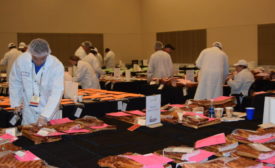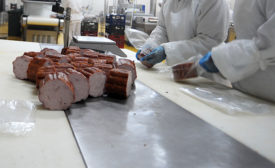Special Reports
2018 Deli Report
2018 Deli Report: Keep it fresh
Meat and poultry are top sellers in supermarket delis, but a lack of innovation slices into revenues.
Read More
Cover Story | 2018 Sausage Report
The 2018 Sausage Report: Showcasing new flavors
Sausage appeals to consumers who want premium quality, ethnic flavors and nostalgia.
Read More
Special Report
2018 Top 100 meat and poultry processors: The race is on
As processors pushed to make the most of good economic conditions in 2017, sales are up, acquisitions are occurring more frequently and expansion is happening in the meat and poultry industry.
Read More
Amazon Keynote
How Amazon handles food safety, recalls
Amazon VP Careltt Ooton spoke Tuesday morning during the Food Safety Summit keynote about how the company uses Natural Language Processing to scan customer feedback, and constantly monitor for food safety issues.
Read More
The give-and-take of inspection in meat processing
Federal and state inspection help keep the food supply safe, but it must give small processors the opportunity to survive without drowning in paperwork or burdensome regulations.
Read More
Food Safety Report | Apparel
Food safety apparel in meat and poultry plants: Suit up for safety
Appropriate food safety apparel in meat and poultry plants can minimize cross-contamination threats, but attaining full compliance can be challenging.
Read More
Stay ahead of the curve. Unlock a dose of cutting-edge insights.
Receive our premium content directly to your inbox.
SIGN-UP TODAYCopyright ©2024. All Rights Reserved BNP Media.
Design, CMS, Hosting & Web Development :: ePublishing













